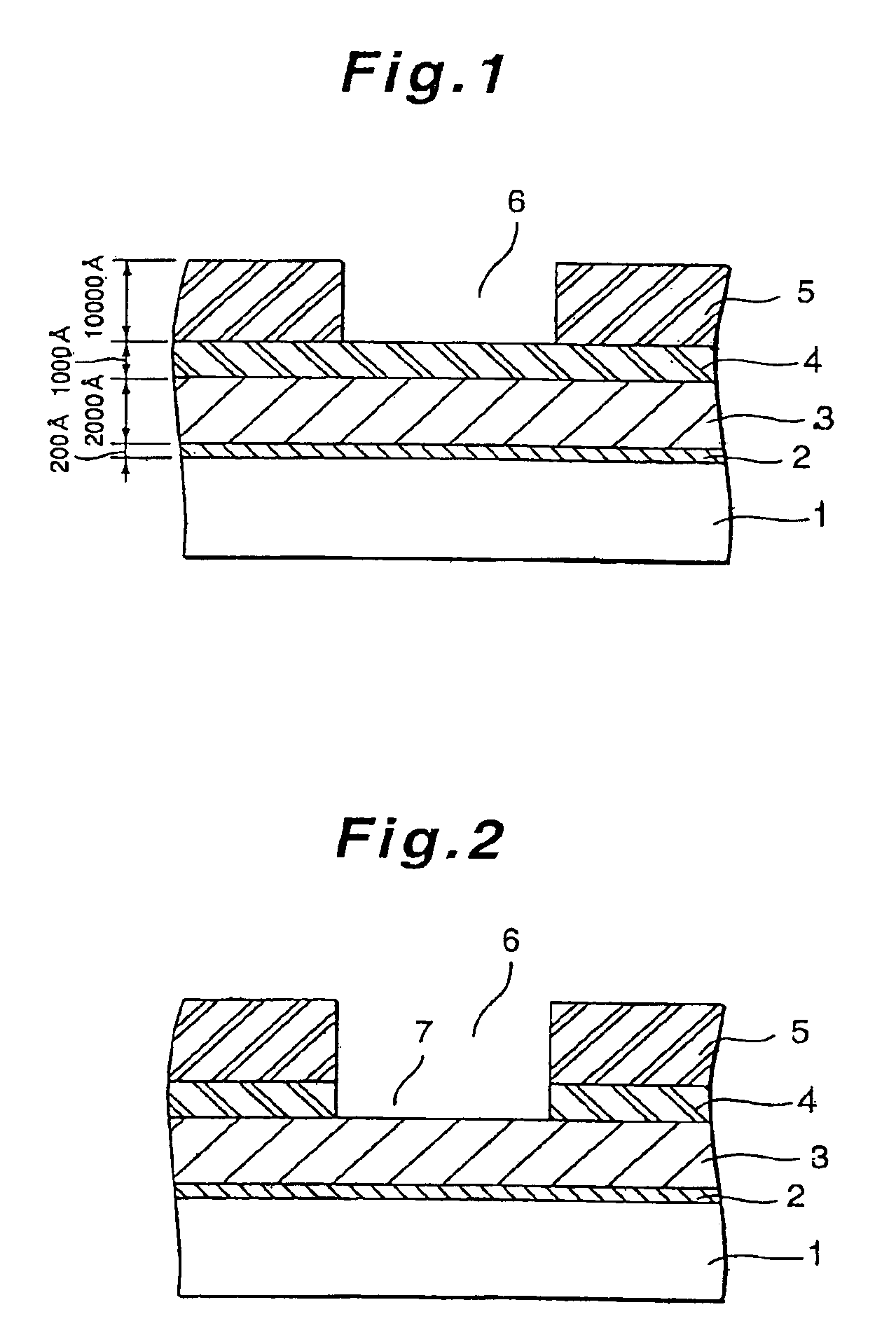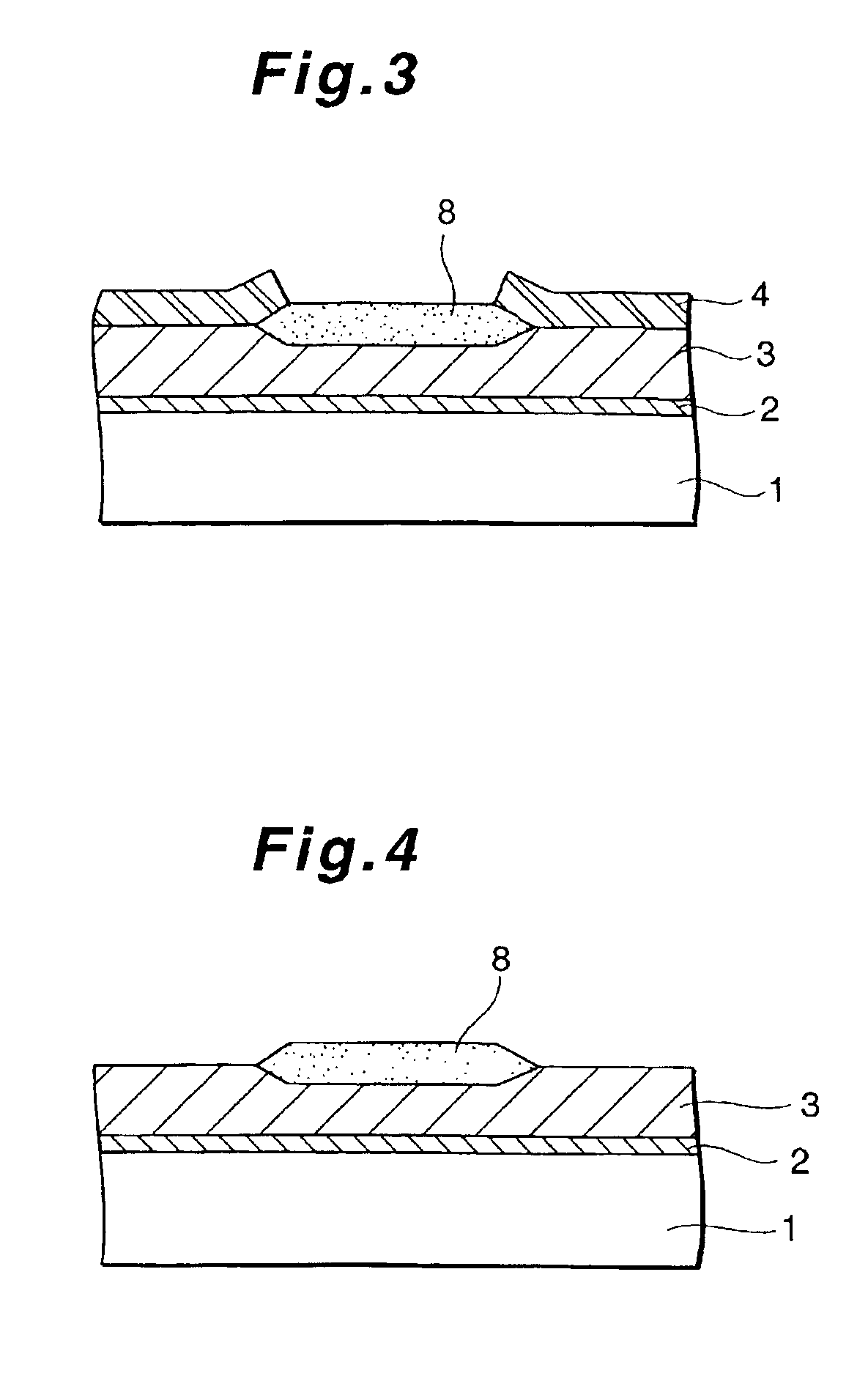Method of producing semiconductor element and nonvolatile semiconductor memory produced by this method
a technology of nonvolatile semiconductor memory and semiconductor elements, which is applied in the direction of semiconductor devices, electrical devices, transistors, etc., can solve the problems of mending defects in lattice so as to achieve the effect of reducing lattice defects, reducing production circumstances, and reducing lattice defects
- Summary
- Abstract
- Description
- Claims
- Application Information
AI Technical Summary
Benefits of technology
Problems solved by technology
Method used
Image
Examples
embodiment 1
[0041]Although, a nonvolatile semiconductor memory cell is produced by the method mentioned above of the present invention, the inventor prepared a sample of he second oxide film 10 as well as the conventional testing method mentioned before. And, he tested the sample so as to evaluate the dielectric strength of the tunnel oxide film which consists in the cell. The result of the test is shown in FIG. 9. The testing method is, as well as the conventional way, the voltage impressed to the sample which thickness of about 100 Å was gradually increased from 0V and a leak current was measured.
[0042]As shown in FIG. 9 at the same voltage, each leak current of the tunnel oxide film of the present invention is less than that of the conventional tunnel oxide film. That is, as for the tunnel oxide film of the present invention, it has been convinced that the dielectric strength of it has come near to the dielectric strength 12 MV / cm of thermal oxide film. So, with this tunnel oxide film, we h...
embodiment 2
[0050]As for the tunnel oxide film formed , the inventor of present invention prepared a sample which thickness is about 100 Å and which sectional area is 0.02 mm2, so as to conduct the life test and C-V (capacity-voltage) characteristic test. The result of each test is shown in FIG. 12 and FIG. 13 respectively.
[0051]FIG. 12 shows the life time parameters of the films, comparing what has been annealed by the method of Embodiment 2 of present invention with what has been annealed by the conventional method. To mention the method of the life test briefly, the prescribed numbers of electrodes are made contact with the portions of the prescribed area on the oxide film sample formed flat. And, 4.E-5A of a strong current for the semiconductor element is continued to flow controlling in the uniform strength. Meanwhile, the impressed voltage goes down to 0V. And, measured is the time from when a voltage impressed that is the current begun to flow until when the drop in voltage occurred. Thi...
embodiment 3
[0060]Consequently, , the initial temperature is got down to the minimum temperature (about 400° C.) where thermal oxidation of silicon occurs. The temperature lower than this minimum temperature is not preferable because the throughput of the device becomes decreased, though the natural oxidation is certainly prevented. Moreover, getting down to lower than this minimum temperature is threatened to deteriorate the production circumstances. That is, film forming material gas is solidified and sticked to the inner wall and ceiling of the CVD device. In this circumstance, solidified material is likely to peel off from the ceiling when the device is heated up for deposition. And these materials solid can drop on the wafer. Consequently, also for the purpose of preventing this, the minimum temperature (about 400° C.) has been prescribed. In addition, it has been conceived that this minimum temperature may also be selected from the range of about ±5° C. around 400° C.
[0061]The same method...
PUM
| Property | Measurement | Unit |
|---|---|---|
| temperature | aaaaa | aaaaa |
| temperature | aaaaa | aaaaa |
| temperature | aaaaa | aaaaa |
Abstract
Description
Claims
Application Information
 Login to View More
Login to View More - R&D
- Intellectual Property
- Life Sciences
- Materials
- Tech Scout
- Unparalleled Data Quality
- Higher Quality Content
- 60% Fewer Hallucinations
Browse by: Latest US Patents, China's latest patents, Technical Efficacy Thesaurus, Application Domain, Technology Topic, Popular Technical Reports.
© 2025 PatSnap. All rights reserved.Legal|Privacy policy|Modern Slavery Act Transparency Statement|Sitemap|About US| Contact US: help@patsnap.com



